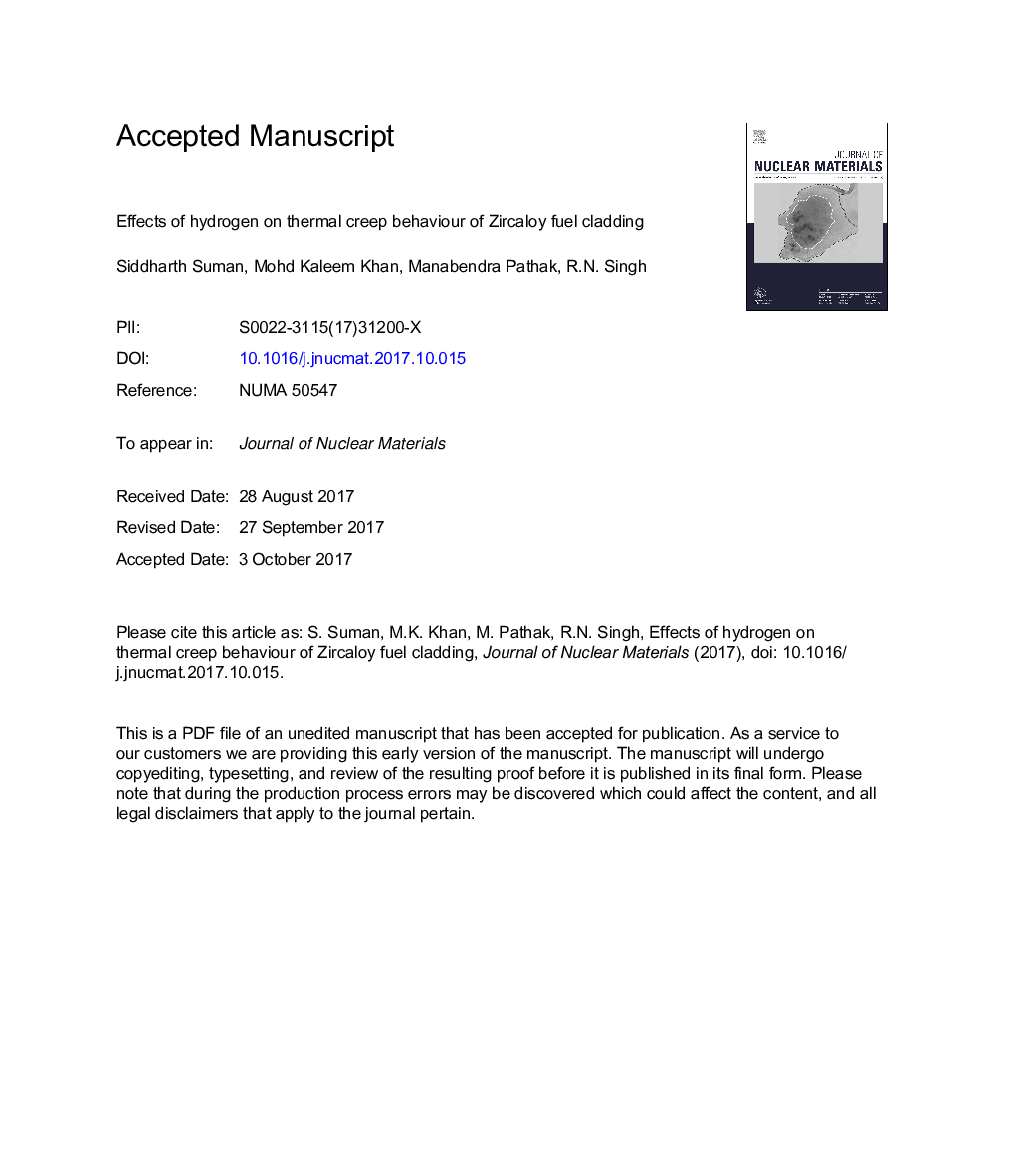| Article ID | Journal | Published Year | Pages | File Type |
|---|---|---|---|---|
| 7963505 | Journal of Nuclear Materials | 2018 | 56 Pages |
Abstract
Zirconium alloys are extensively used for nuclear fuel cladding. Creep is one of the most likely degradation mechanisms for fuel cladding during reactor operating and repository conditions. Fuel cladding tubes undergo waterside corrosion during service and hydrogen is produced as a result of it-a fraction of which is picked up by cladding. Hydrogen remains in solid solution up to terminal solid solubility and it precipitates as brittle hydride phase in the zirconium metal matrix beyond this limiting concentration. Hydrogen, either in solid solution or as precipitated hydride, alters the creep behaviour of zirconium alloys. The present article critically reviews the influence of hydrogen on thermal creep behaviour of zirconium alloys, develops the systematic understanding of this multifaceted phenomenon, and delineates the thrust areas which require further investigations.
Related Topics
Physical Sciences and Engineering
Energy
Nuclear Energy and Engineering
Authors
Siddharth Suman, Mohd Kaleem Khan, Manabendra Pathak, R.N. Singh,
